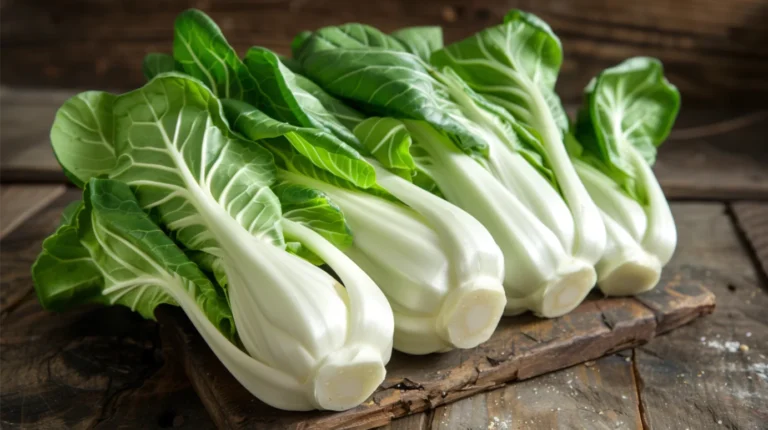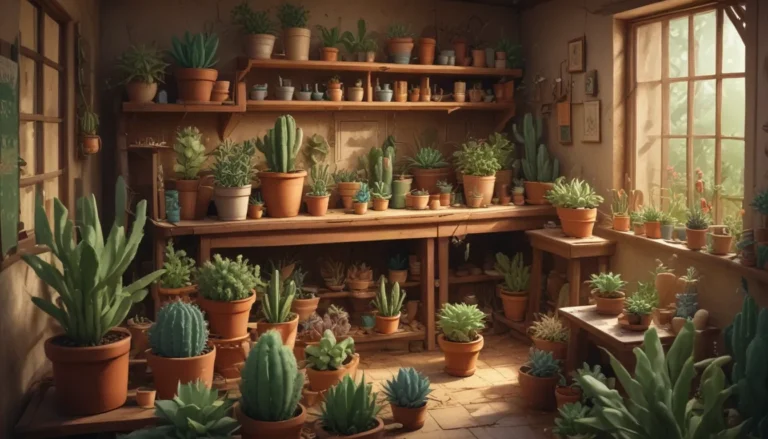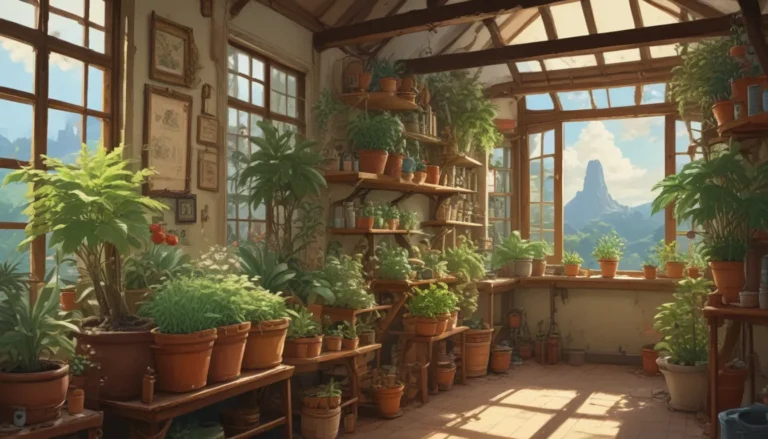The Complete Guide to Preventing and Managing Rotting in Succulents

Succulents are not only colorful and fun to grow but also make for wonderful decorative pieces in homes and gardens. Whether you are growing miniature species indoors or towering varieties in your outdoor landscape, succulents are a popular choice among gardeners.
However, one common challenge that all succulent enthusiasts face is the threat of rotting. Rotting in succulents can be detrimental to their health and can lead to irreversible damage if not addressed promptly. In this comprehensive guide, we will explore the causes of rotting in succulents, how to recognize it, and most importantly, how to prevent it.
Understanding Rotting in Succulents
Rotting in succulents occurs when the growing environment becomes overly wet, resulting in the roots lacking oxygen. Poor drainage, overwatering, excess humidity, and compacted soil can all contribute to water pooling around the roots, depriving them of essential nutrients and oxygen.
Initially, the roots may start to collapse, becoming dark, slimy, and soft. While the leaves may not show immediate signs of distress, the soggy conditions activate soilborne pathogens that infect the entire plant. Gradually, the excess moisture travels up through the stems, softening them and compromising their structural integrity.
As the rot progresses, the foliage may split, soften, and turn mushy, eventually turning pale, yellow, and black. In addition to root-level pathogens, some diseases can also affect the foliage, rendering it soft and watery before spreading to the stems and roots.
It is important to note that once rotting sets in, it is irreversible. The best course of action is to dispose of affected plants and potting soil to prevent the spread of pathogens to healthy tissue. While fungicidal treatments can help inhibit the spread of disease, they do not reverse the damage caused by rotting.
Common Causes and Types of Succulent Rotting
There are several causes of rotting in succulents, ranging from fungal infections to bacterial diseases. Here are some common types of succulent rotting:
- Anthracnose
- Armillaria Root Rot
- Bacterial Soft Rot
- Fusarium Wilt
- Phytophthora
- Pythium
- Rhizoctonia Blight
Each of these diseases presents unique challenges and requires specific treatment methods. Let’s take a closer look at each type of rotting and how to address them effectively.
1. Anthracnose
Anthracnose is a fungal disease that causes dark, watery lesions on the foliage of succulents. Overhead watering can activate fungal spores, leading to extensive damage if left untreated. While picking off affected leaves early on can help save your plants, using a copper fungicide may be necessary for severe cases.
2. Armillaria Root Rot
Armillaria root rot, also known as honey or oak root fungus, is a fungal infection that affects the roots of succulents. Stunting, wilting, and dieback are common symptoms of this disease. While chemical controls may not be effective, introducing Trichoderma fungi can help suppress the spread of Armillaria.
3. Bacterial Soft Rot
Bacterial soft rot is caused by Erwinia carotovora and can lead to the collapse of stems in succulents. Unfortunately, this disease is incurable, and affected plants should be disposed of to prevent further spread.
4. Fusarium Wilt
Fusarium wilt is caused by various species of Fusarium oxysporum fungi that penetrate vulnerable tissue, causing yellowing, stunting, and wilting. Unfortunately, there is no cure for this disease, and affected cuttings should be avoided.
5. Phytophthora
Phytophthora is a group of soil-borne pathogens that attack the roots of succulents under moist conditions. Using a copper fungicide and proper soil drainage can help control the spread of this disease.
6. Pythium
Pythium water mold species can destroy foliage by penetrating the roots and stems of succulents. The addition of properly composted pine bark to potting soil and the introduction of mycoparasite Gliocladium virens can help control Pythium.
7. Rhizoctonia Blight
Rhizoctonia solani causes rhizoctonia blight in succulents, leading to damping-off of seedlings and root and stem rot. Applying mycorrhizal fungi and a biofungicide like Mikrobs can help prevent or address this disease effectively.
Proactive Measures to Prevent Succulent Rotting
While treating rotting in succulents is challenging, the best approach is to take proactive measures to prevent it from occurring in the first place. Here are some preventive steps you can take:
- Buy succulents from reputable suppliers with sanitary practices.
- Maintain a healthy care regimen with proper temperature, humidity, and sunlight.
- Use pots with ample drainage and avoid overcrowding.
- Sanitize gardening tools and watering cans regularly.
- Use a quality cactus and succulent potting mix.
- Water sparingly and avoid splashing water on foliage.
- Apply preventative fungicides as needed.
By following these proactive measures, you can significantly reduce the risk of succulent rotting and enjoy healthy, thriving plants in your home or garden.
Conclusion
While succulent rotting can be a challenging issue for growers, it is not insurmountable. By understanding the causes of rotting, recognizing the symptoms, and taking proactive measures, you can effectively prevent and manage rotting in your succulents.
Remember to buy quality plants, maintain a healthy care regimen, and practice good sanitary gardening practices. By doing so, you can enjoy vibrant, colorful succulents that will brighten up your indoor or outdoor spaces for years to come.
Do you grow succulents? Have you encountered rotting issues in your plants? Share your experiences in the comments below!
If you found this guide helpful and want to learn more about succulent gardening, check out the following articles:
- 11 Easy-Care Exotic Succulents to Grow at Home
- How to Identify and Control Mites on Succulents
- 9 Must-Have Succulent Planters
Remember, while succulent rotting can be irreversible, it is entirely preventable with the right care and attention. Happy gardening!





